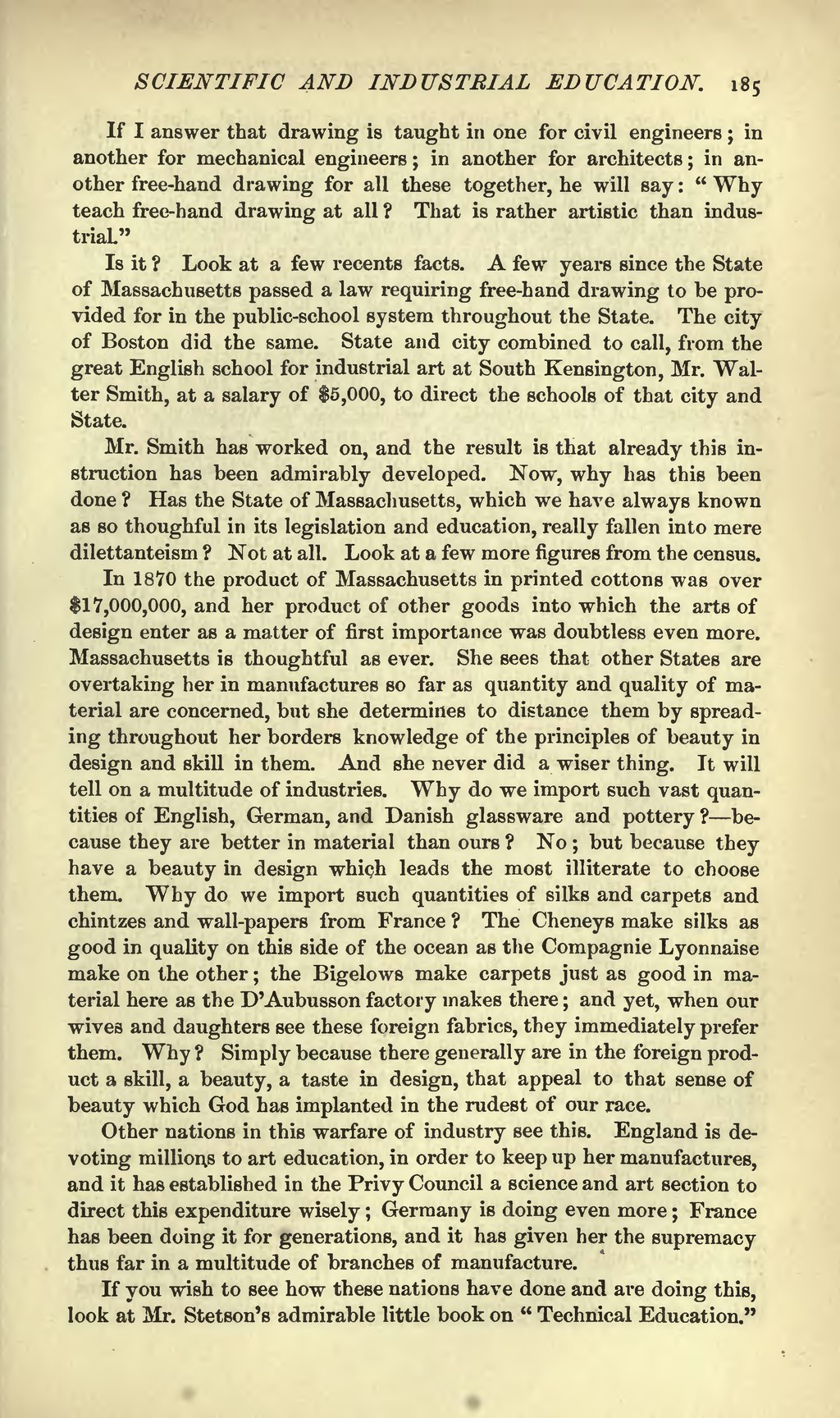If I answer that drawing is taught in one for civil engineers; in another for mechanical engineers; in another for architects; in another free-hand drawing for all these together, he will say: "Why teach free-hand drawing at all? That is rather artistic than industrial"
Is it? Look at a few recents facts. A few years since the State of Massachusetts passed a law requiring free-hand drawing to be provided for in the public-school system throughout the State. The city of Boston did the same. State and city combined to call, from the great English school for industrial art at South Kensington, Mr. Walter Smith, at a salary of $5,000, to direct the schools of that city and State.
Mr. Smith has worked on, and the result is that already this instruction has been admirably developed. Now, why has this been done? Has the State of Massachusetts, which we have always known as so thoughful in its legislation and education, really fallen into mere dilettanteism? Not at all. Look at a few more figures from the census.
In 1870 the product of Massachusetts in printed cottons was over $17,000,000, and her product of other goods into which the arts of design enter as a matter of first importance was doubtless even more. Massachusetts is thoughtful as ever. She sees that other States are overtaking her in manufactures so far as quantity and quality of material are concerned, but she determines to distance them by spreading throughout her borders knowledge of the principles of beauty in design and skill in them. And she never did a wiser thing. It will tell on a multitude of industries. Why do we import such vast quantities of English, German, and Danish glassware and pottery?—because they are better in material than ours? No; but because they have a beauty in design which leads the most illiterate to choose them. Why do we import such quantities of silks and carpets and chintzes and wall-papers from France? The Cheneys make silks as good in quality on this side of the ocean as the Compagnie Lyonnaise make on the other; the Bigelows make carpets just as good in material here as the D'Aubusson factory makes there; and yet, when our wives and daughters see these foreign fabrics, they immediately prefer them. Why? Simply because there generally are in the foreign product a skill, a beauty, a taste in design, that appeal to that sense of beauty which God has implanted in the rudest of our race.
Other nations in this warfare of industry see this. England is devoting millions to art education, in order to keep up her manufactures, and it has established in the Privy Council a science and art section to direct this expenditure wisely; Germany is doing even more; France has been doing it for generations, and it has given her the supremacy thus far in a multitude of branches of manufacture.
If you wish to see how these nations have done and are doing this, look at Mr. Stetson's admirable little book on "Technical Education."
